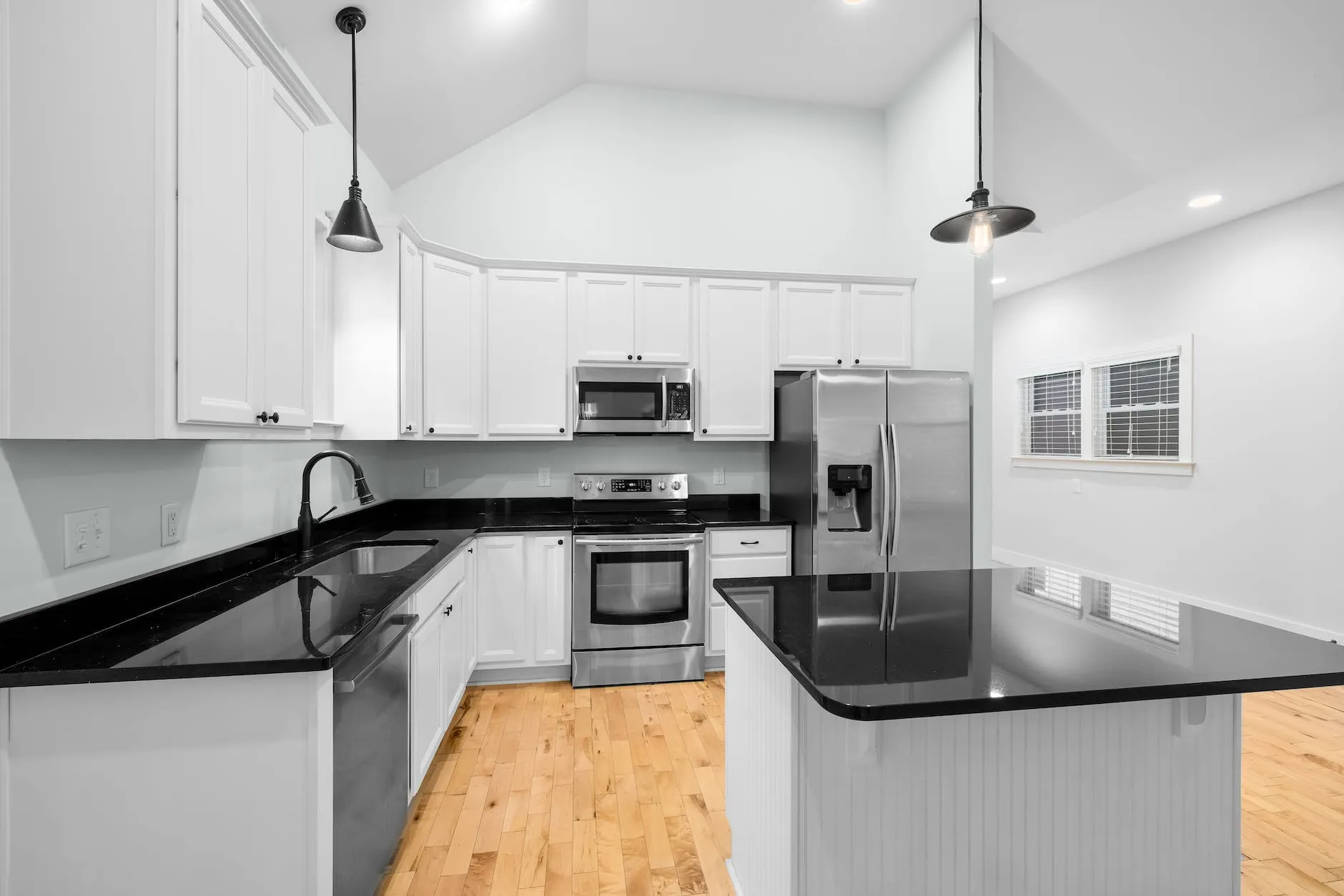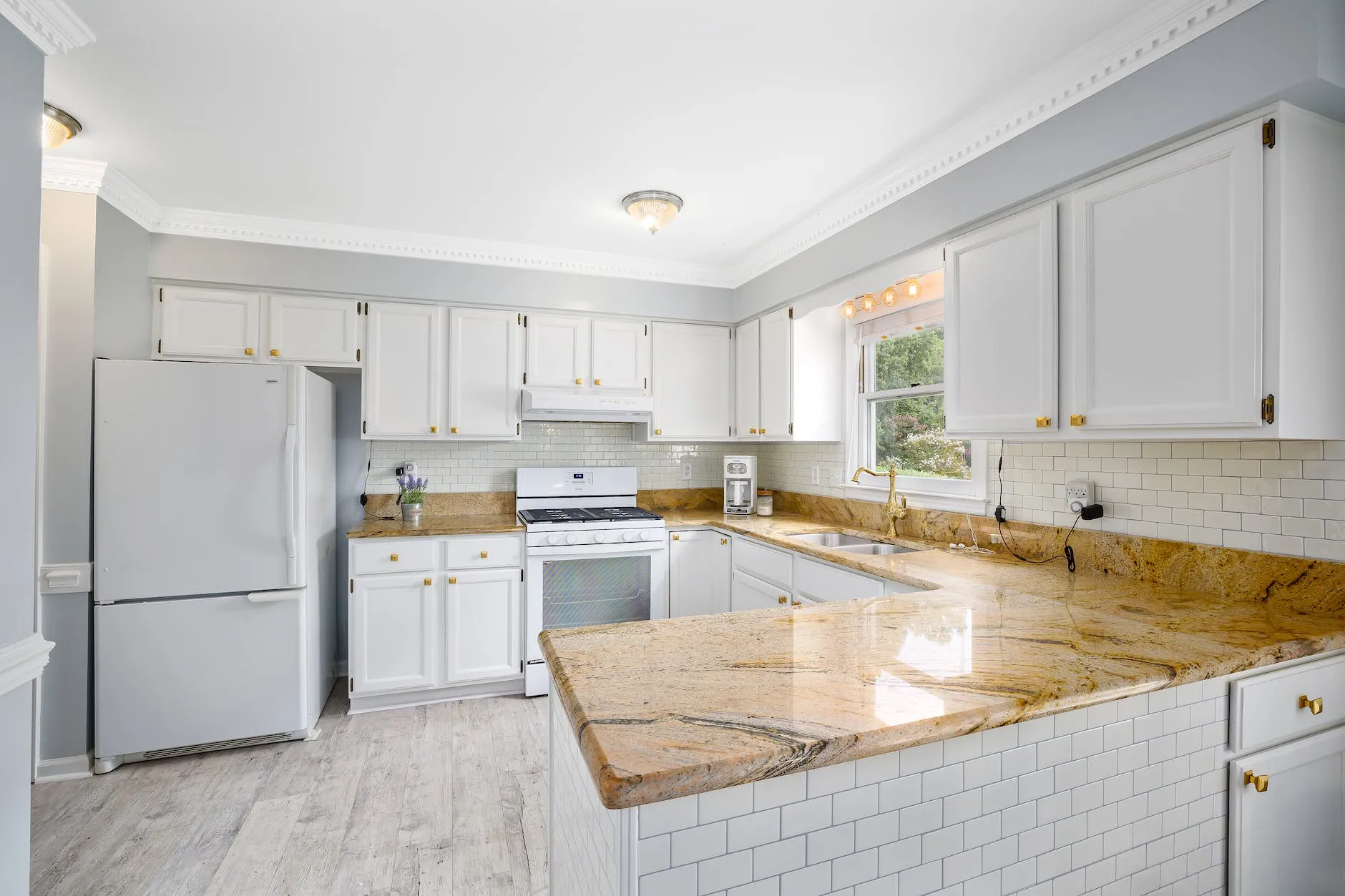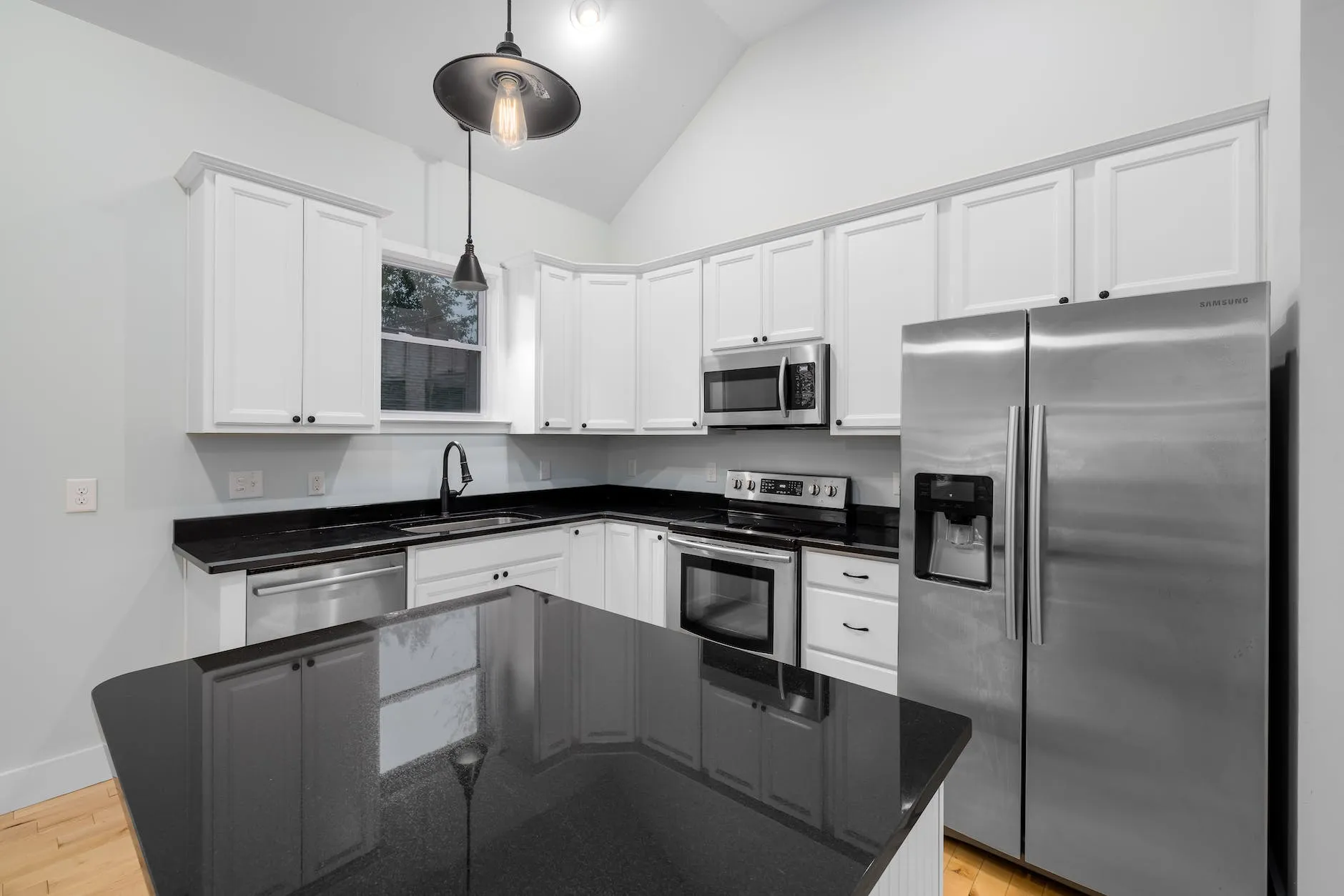Kitchen remodeling can be daunting, especially when you’re trying to stick to a budget. One of the biggest expenses for any kitchen renovation is replacing the countertop. But what if it’s not necessary? Can you replace kitchen cabinets without replacing countertop?
In this blog post, we will explore what options are available to you if you want to replace your kitchen cabinets without having to replace the countertop. We’ll look at factors like existing countertop material, cabinet size, shape, and how much work may be involved in the installation process. By the end of this post, you should better grasp whether replacing your cabinets without replacing your countertop is feasible.
Can You Replace Kitchen Cabinets Without Replacing Countertop?
It is possible to replace kitchen cabinets without replacing the countertop, but it is not recommended. This is because the countertop is usually attached to the cabinets, so replacing the cabinets would also mean having to replace the countertop.
Additionally, the cost of replacing both the cabinets and countertop can be quite expensive. If you are set on replacing just the cabinets, then you will need to detach the countertop from the old cabinets and then attach it to the new ones. This can be a difficult and time-consuming process, so it is best to leave it to a professional.

What to Consider Before Replacing Cabinets Without Replacing Countertops
There are a few things you should consider before deciding to replace your cabinets without also replacing your countertops.
How old are your current countertops? If they’re showing signs of wear and tear, then it might make more sense to replace both the cabinets and countertops at the same time.
Are you happy with the overall layout of your kitchen? Replacing just the cabinets could potentially disrupt your kitchen’s flow if not done carefully.
What is your budget for this project? Cabinets can be expensive, so if you’re on a tight budget, you may want to consider keeping your current countertops and simply refreshing your cabinets with new paint or hardware. Ultimately, it’s important to weigh all of your options before making a decision.
Benefits and Drawbacks of Replacing Cabinets Without Replacing the Countertop
If you’re planning a kitchen remodel, you may wonder if it’s possible to replace your cabinets without replacing the countertop. After all, new cabinets can be a big investment, and you may want to save money by keeping your existing countertop.
So, what are the benefits and drawbacks of replacing cabinets without also replacing the countertop?
Benefits
- You can save money by reusing your existing countertop.
- You can avoid the hassle and expense of installing a new countertop.
- You can update your kitchen’s aesthetic without completely remodeling it.
Drawbacks
- The color, size, and style of your new cabinets may not match the existing countertop, resulting in an inconsistent look.
- If your old countertop is stained or damaged, it will be more noticeable with fresh new cabinets.
How To Replace Kitchen Base Cabinets Without Removing the Countertop
It is possible to replace kitchen cabinets without removing the countertop. However, it is important to take measurements and plan ahead before beginning the project. Additionally, it may be necessary to remove the backsplash in order to access the area behind the cabinets.
Once the measurements are taken, and the new cabinets are ready for installation, it is important to secure the new cabinets in place before attaching them to the countertop. This can be done using shims or by bracketing them to the wall. It is also important to ensure that any necessary plumbing or electrical lines are rerouted.
When all of the preparations have been made, it is time to attach the cabinets to the countertop. This can be done with screws, glue, or a combination of both. Finally, any additional hardware, such as handles and knobs, should be added and secured in place.
Installing New Cabinets Under the Existing Countertop
It is possible to replace kitchen cabinets without replacing the countertop, but there are a few things to keep in mind.
First, the new cabinets must be the same size or smaller than the existing ones.
Second, the new cabinets will need to be installed on top of the countertop, so make sure they are level and secure before attaching them.
Finally, you may need to trim the countertop to fit around the new cabinets.

Can You Save Granite Countertops When Replacing Cabinets?
If you’re planning to replace your kitchen cabinets, you may be wondering if you can save your granite countertops. The good news is that it is possible to replace cabinets without replacing the countertop, although there are a few things you’ll need to take into account.
First, you’ll need to make sure that the new cabinets will fit over your existing countertop. If they’re not an exact match, you may need to have your countertop trimmed down or extended in order to accommodate the new cabinets.
Second, you’ll need to consider the height of your new cabinets. If they’re significantly taller than your old ones, you may need to have your granite countertops lowered in order to achieve a flush look.
Third, you’ll need to decide what kind of finish you want for your new cabinets. If you want them to match your existing granite countertops, you’ll need to find pre-finished cabinets with a similar color and finish. Alternatively, you could have your old countertops refinished to match the new cabinets.
Finally, you’ll need to take into account the cost of both options before making a decision. Replacing your kitchen cabinets can be expensive, so if saving money is a priority, opting to keep your granite countertops may be the best option for you.
Can You Replace One Kitchen Cabinet?
It is possible to replace kitchen cabinets without replacing the countertop, but there are a few things you need to take into consideration.
First, the height of the new cabinets must be the same as the old ones, or your countertop will be too high or low.
Second, if you have any molding or trim around your current cabinets, you’ll need to remove and reinstall them.
Third, your new cabinets should be the same width as your old ones, or they won’t fit properly in the space.
Finally, make sure to measure twice and cut once when installing your new cabinets!
Can You Reuse Quartz Countertops When Replacing Cabinets?
If you’re considering replacing your kitchen cabinets, you may be wondering if you can reuse your quartz countertop. The answer is yes; you can definitely reuse quartz countertops when replacing cabinets! Here’s a quick guide on how to do it:
- Start by measuring the area where your new cabinets will be installed. This will give you a good idea of how much countertop space you’ll need to work with.
- Next, remove the old cabinets and any hardware that may be attached to them. Be careful not to damage the quartz countertop while doing this.
- Once the old cabinets are out, it’s time to install the new ones! Follow the instructions that come with your new cabinets and make sure they’re securely in place.
- Finally, reattach your quartz countertop to the new cabinets using construction adhesive and/or caulk. Make sure everything is level and secure before moving on to the next step in your kitchen remodel!
Cost Considerations for Replacement Projects
The cost of replacing kitchen cabinets can vary depending on the type of cabinets you choose and the size of your kitchen. If you are considering replacing your kitchen cabinets, it is important to consider the following factors:
Labor Costs: The cost of labor will vary depending on the type of cabinets you choose and the size of your kitchen. If you choose to install new cabinets yourself, you will need to factor in the cost of tools and materials. If you hire a professional to install your new cabinets, you will need to factor in the cost of their labor.
Material Costs: The cost of materials will also vary depending on the type of cabinets you choose and the size of your kitchen. If you choose to install new cabinets yourself, you will need to factor in the cost of lumber, hardware, and cabinet doors. If you hire a professional to install your new cabinets, their material costs will be factored into their labor costs.
Total Cost: The total cost of replacing your kitchen cabinets can vary depending on the type of cabinets you choose and the size of your kitchen. If you install new cabinets yourself, you will need to factor in both labor and material costs. If you hire a professional to install your new cabinets, their total cost will include both labor and material costs.
Alternatives to Total Cabinet Replacement
If you’re looking to update your kitchen without undertaking a full renovation, a few options are available. One is to reface your cabinets, which involves replacing the doors and drawer fronts while leaving the rest of the cabinet intact. This can be a cost-effective way to give your kitchen a new look and less disruptive than a full replacement.
Another option is to simply replace the doors on your existing cabinets. This can be a quick and easy way to change up the style of your kitchen without having to replace the entire unit. You can find replacement doors at most home improvement stores or order them custom-made to match your existing cabinetry.
If you want to go all out, you can always opt for a complete cabinet replacement. This will allow you to completely change your kitchen’s layout and choose new cabinets that better suit your needs. Keep in mind that this option will be more expensive and time-consuming than either refacing or door replacement. Hence, it’s important to weigh your options carefully before making a decision.
Conclusion
Replacing kitchen cabinets without replacing the countertop is certainly possible and can be a great way to upgrade your kitchen for a more modern look. It requires careful planning, precise measurements, and patience when it comes to installation, but you can achieve fantastic results with the right materials. And if you’re unsure how to go about it yourself, don’t hesitate to consult a professional who can help you get the job done right.
Frequently Asked Questions:
Can you replace the cabinets while keeping countertop?
It is possible to replace kitchen cabinets without replacing the countertop, but it is not always advisable. Depending on the age and condition of your countertop, you may be better off replacing it with your cabinets. If your countertop is in good condition and you are happy with its appearance, you may be able to leave it in place.
Can you replace the kitchen cabinets only?
It is possible to replace kitchen cabinets without replacing the countertop, but it will depend on the type of cabinets you have and how they are installed. If you have face-frame cabinets, it will be easier to remove the old cabinets and install new ones without having to remove the countertop. However, if you have frameless cabinets, you will need to remove the countertop in order to access the cabinet installation screws.
Can you reuse granite countertops when replacing cabinets?
If you’re considering replacing your kitchen cabinets, you might wonder if you can reuse your granite countertops. The good news is that you can indeed reuse granite countertops when replacing cabinets! To do that, remove the old cabinets carefully to avoid damaging the countertops. Measure the new cabinets and cut the countertops to fit, if necessary. Install the new cabinets and secure them in place. Re-install the granite countertops, making sure they’re properly sealed.
Is it cheaper to reface or replace kitchen cabinets?
Generally speaking, it is cheaper to reface cabinets than to replace them. However, the total cost will depend on the type of cabinets you have and the extent of the damage. If your cabinets are in good condition with only minor damage, then refacing is probably your best option. This involves replacing cabinet doors and drawer fronts and adding new hardware. The total cost will be much less than if you replace your kitchen cabinets. However, replacing your cabinets may be your only option if your cabinets are severely damaged or outdated. This can be a very costly project, so be sure to get multiple estimates before making a final decision.
